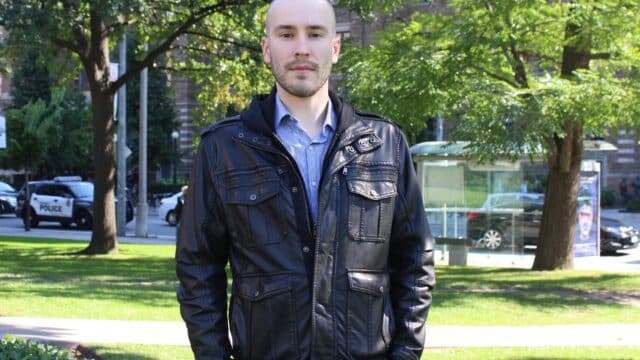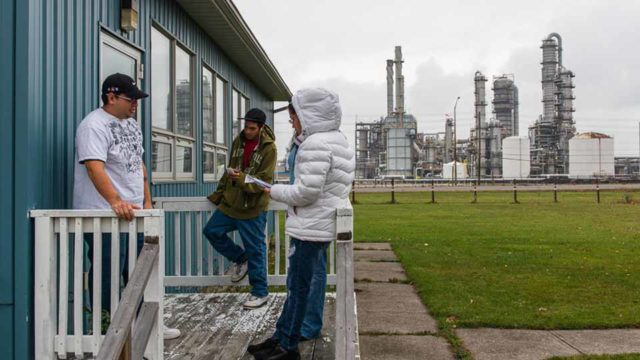Province must consider the cumulative effects of pollution in toxic “hot-spots”
For many years, Ecojustice scientists and lawyers have been helping Ron Plain and Ada Lockridge fight to protect their Aamjiwnaang First Nation community from air pollution. Ron and Ada live in Sarnia, Ontario, in the middle of Chemical Valley – a cluster of major oil refineries and petro-chemical plants that house 40 per cent of Canada’s chemical industry.
Ron and Ada are breathing in air polluted by each and every facility in the area. But when the Ministry of Environment and Climate Change (MOECC) decides whether to approve new pollution from any one facility, it only considers the individual emissions of that one facility. The result? The Ministry ignores the cumulative environmental and health effects of pollution from many facilities in one area.
That’s why Sarnia, Ontario has some of the most polluted air in the province.
This month, Dianne Saxe, the Environmental Commissioner of Ontario, decried the impacts of air pollution on the health of the Aamjiwnaang community as “shameful.” Sadly, this isn’t the first time the Commissioner has had to do so.
In 2009, we helped Ron and Ada file a formal request asking the Ontario government to start considering the cumulative effects of air pollution when it approves a new pollution source at a facility, not just the impacts from that one facility. Despite indications that meaningful progress was finally being made, the Ministry still has not completed its promised review. The Environmental Commissioner condemned this delay as “disrespectful of the public’s environmental rights.”
It is long past time for the Ministry to right the injustice suffered by those living in air pollution hot spots in this province. The Ministry has now promised to complete its review of Ron and Ada’s request by early 2017. Although a seven year delay in completing a promised review is unacceptable, we’re hopeful the review will change the way the Ministry approves pollution. Further, there should be real, on-the-ground improvements for Ron and Ada.
To do that, the Ministry needs to do the following:
- Prioritize reducing air pollution in priority areas – like Sarnia, Hamilton and Sudbury – where the cumulative effects of air pollution endanger human health.
- Continually improve air quality and reduce toxic emissions.
- Assess the emissions from multiple facilities and combined effects of multiple pollutants.
- Work for environmental equity by considering the characteristics of affected communities. The government should ensure that everyone, regardless of income, race, or nationality, benefits from equal protection from pollution.
- When air quality doesn’t meet provincial standards for human health or the environment, the Ministry must require polluters to use the very best technology to reduce pollution.
- Before the Ministry issues pollution permits in pollution hot spots for new facilities or expanded facilities, the cumulative effects of all existing and proposed pollution sources in an area must be considered.
- Commit to transparent emission evaluations when it comes to air pollution permits. Communities have the right to understand the extent of emissions and how they will be affected.
Current assessment failures are hurting communities
The Ministry’s current approach treats every community as if it has only one polluter, when the reality is very different. The Ministry’s failure to assess cumulative effects when it approves air pollution means that communities close to a cluster of polluters get a different standard of air quality protection than communities with one or no polluters. Evidence shows that the burden of negative health impacts caused by this double standard is disproportionately shouldered by Indigenous and other socially vulnerable communities.
It is long past time for the Ministry to right this injustice. The Ministry needs to ditch its antiquated assessment structure, finish its review and breathe new life into an approval system that protects our communities.







